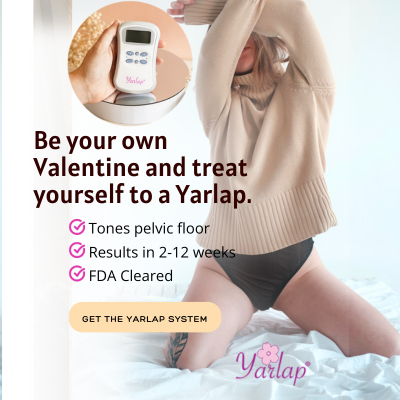Seven years ago, I was working literally just to pay bills.
The power bill, the phone bill, the daycare bill.
The car insurance, the utilities.
Home insurance.
(If you are bored reading this, please be assured that I am equally bored writing it.)
Working for the sole purpose of redistributing my money to have this completely cultural standard and fundamentally “responsible” adult existence was bland, mundane, and draining.
It really sucked.
For some context: I found myself in this position after becoming a lone parent, a life where I draw no support from either the government or another parent or partner. And also a life where, because I am not in a relationship, my income represents my entire household income.
Single moms tend to be clumped together as a non-affluent, heavily supported demographic.
I wasn’t interested in living like that.
Yet, for many months, which dragged into years, I was living just like that. The red and the black didn’t match, and I was spending more than I was earning.
Sensing this financial stress, my dad sat with me in front of an Excel spreadsheet and made me a budget.
Not shockingly, the budget didn’t offer me any salvation. The numbers still didn’t match just by writing them down, and seeing them in black and white offered me even fewer reasons to be grinding myself through work every day.
A budget, to me, is the financial equivalent of a diet. On one side, there’s a list of boring and bland things that are allowable, and on the other side, there’s a list of desirable and exciting ones that aren’t allowable and never will be.
But seeing that budget filled me with despair and shame. There wasn’t anything obvious to “cut,” and I didn’t see anything in that document that made me feel even a hint of excitement or hope.
Besides, I have a business degree. I know how to make and apply a budget. That wasn’t really the problem.
One of the problems was that I kept rebelling against myself, leaking money on Starbucks coffee and newsstand magazines that brought me little bits of “I’m doing something for myself”—seven dollars at a time.
I was cheating on my “diet.”
My mini rebellions meant I didn’t get anything I really wanted.
So within a year of that bleak budget, I created an entirely new system for myself, something I called an “Abundance Audit.”
Today, I’m still a working single mom, and I currently evade the cultural stereotype because I’m no longer uninspired by my income or where I spend my money.
Yup, I still pay those boring bills, but I now also have savings, I am debt-free, and I spend money on big-ticket items that fill me with delight.
To find your own turning point of financial abundance without a budget:
1. Identify three categories of spending that would make you feel financially abundant.
We want to choose categories where the amount we spend (x) nets an emotional return that’s greater than what we spend (x + 1).
I personally chose “travel” and “education” as two of the three categories on my list.
Here are some things to note:
>> “Categories” mean broad things, such as travel, education, hobbies, home, vehicles, clothing, or home decor. It can be any category that adds meaning to your life; frivolities are (more than) welcome.
>> The list will be short. It is a good idea to choose no more than three categories but also no fewer. I personally found that more than three felt unfocused, and less than three felt uninspiring.
>> These categories can include micro-items that are either bigger ticket items or smaller ones, but the focus is on the bigger categories, not individual “goal items.”
>> For now, don’t worry about how you are going to pay for these things; simply start with a focused list of categories (see steps four, five, and six for how to pay for the items).
>> These are your highly personal things, not a financial planner’s, not a “money coach’s,” and not your dad’s or an internet expert’s. These people are not you, and you want your list to reflect your true desires.
What do we want most of all in order to feel satisfied with how we spend our money or what we have to do to earn it?
Tip: you know you have the right items on your Abundance Audit list when you feel a flutter in your chest. An internal, “Yes!”
Tip: Do not proceed to additional steps until this list is clear. Take all the time necessary to crystalize your personal Abundance Audit list before continuing, especially to step two.
2. Cut spending on little things that don’t bring abundance.
This is different than classic budgeting because we won’t care or even miss these items. They are things we might do or buy to try to “feel better,” but they don’t positively impact our life at all or for more than a few minutes.
This list will be filled with (often little) items where we feel we spend x and get x value or x-1 value. The amount we spend nets an emotional return that’s lower than our expenditure.
For me, this list included Starbucks coffee, parking meters, and magazines at newsstands.
Here are two things to note:
>> Be ruthless about getting these as close to zero dollars as possible.
>> Look for replacements. One of my personal cuts was Starbucks. I simply made coffee at home, which didn’t impact the quality of my life. I cut my parking expenses by walking a few extra blocks. Instead of paying for parking across the street, I parked for free a few blocks away or walked the entire distance. These are simple substitutes with no negative impact.
Remember: this isn’t because we are “cutting” or “budgeting.” It’s because they don’t add to our quality of life. It’s “crowding out” things we don’t care about in favor of things we do.
3. Add savings to your “bills.”
>> Savings are now a monthly or bi-weekly “expense.” It could be 25 dollars, or 250 dollars, or 2500 dollars. It doesn’t matter as long as it’s more than 0.01 dollars.
>> Don’t spend your “savings” to buy items from your Abundance Audit.
Enough said.
4. When you have an item you believe you want to buy, compare it against the Abundance Audit.
This is a pre-determined list of categories that makes you swoon.
When you are getting your credit card ready, you can ask yourself, “Is this item (especially if it’s big-ticket) in one of my categories?”
>> If yes, proceed.
>> If no, stop.
Stay focused on spending money in your Abundance Audit categories and not spending money on things that are not.
We already know that other items add nothing of substance to our lives. We also already know that the Abundance Audit items do (and if they don’t, go to step seven).
5. Find ways to be creative and resourceful about acquiring items in the three Abundance Audit categories by brainstorming alternative acquisition methods.
Consider the realm of possibilities available to make items in these categories more financially accessible.
Money is an exchange for time, and we don’t always need physical money in order to pay for things.
Consider, for example, trading your time. I personally paid for two international two-week vacations by doing a work-travel trade.
Brainstorm other techniques to acquire items on your Abundance Audit category list in more accessible ways:
>> Contemplate selling or wholesaling something you love that is so important that it’s one of your top three. I once hosted a one-time Pampered Chef party when I wanted stoneware and my home environment was a key important category on my Abundance Audit.
>> Can you teach something that you typically spend money to learn? For example, can you take a yoga teacher training course if you love yoga and have identified it as a top-three Abundance Audit category?
>> Can you take vacations with friends or family to share costs? Can you drive instead of fly? Can you stay with a friend and offer meals and wine in return for a stay? If “vacations” are on the Abundance Audit, are you open to creative ways of executing the holiday?
>> Items from the categories you prioritize may be available for a reduced price at a consignment store or other secondhand marketplace. For example, check consignment stores for high-end clothing if clothing is on your Abundance Audit list. Consider looking at Facebook Marketplace before making a purchase for items related to a passion or hobby.
Be resourceful, and the possibilities are literally endless.
Transfuse the spirit of abundance into exercising abundant creativity. I have yet to find anything I really want that’s outside my financial capacity because I’m open to creativity in my approach.
Once we know it’s possible, we feel free, rather than constrained, and abundance multiplies.
6. Allow yourself to spend money on these three Abundance Audit categories—without limit.
Abundance is fundamentally about allowing. Once we are clear about what matters to us, satisfied that we want to make an individual purchase due to desire, and comfortable with how we are spending—allow spending without limit.
Once free of the budget mindset, we can spend intuitively and with joy on the things that matter most, knowing that we both have savings and also that we have cut out things that don’t matter.
7. Reassess the three categories periodically.
We change, our life changes, our priorities change.
Have regularly pre-planned opportunities to reassess and re-evaluate, as the lists will morph and shift due to life changes, boredom, and situational adjustments.
For example, travel is not a possibility in the way it once was, so I am currently re-evaluating my list, which I normally do once a year in the fall.
Last year, I shifted education off my list (which had been on the list for six years) and substituted in another category because taking classes and courses didn’t add the zest it once did. Play is important, even within the list.
I am still a single parent. I no longer struggle with monthly financial decisions. I use my Abundance Audit list, plus some creativity around how to acquire what I want (resourcefully) to both have savings and spend what feels like endless money on things that bring me a shot of joy.
I’ve ditched the dusty budget “diet mindset” and now have a great deal of abundance around my expenditures in the areas of life that matter most to me.
I also crowded out my “rebellious” spends on things that added nothing to my life in favor of things that add hits of pleasure.
I defy living a standard “single mom” classic stereotype, and you’ll never convince me that I’m not a millionaire.
~











Read 29 comments and reply